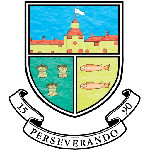Geography
| Miss L Hodgkiss (Head of Department) | lhodgkiss@conyers.org.uk | Mrs A O’Boyle | aoboyle@conyers.org.uk |
| Mr S Pickering | spickering@conyers.org.uk | Mrs C Cooper | ccooper@conyers.org.uk |
Key Stage 5 Curriculum Map
Curriculum Intent
Aim to build on KS4 and continue to study geography in a balanced framework of physical and human themes thus bridging the social and natural sciences. Geography puts this understanding of social and physical processes within the context of place – recognising the great differences in cultures, political systems, economies, landscapes and environments across the world, and exploring the links between them. Understanding the causes of differences and inequalities between places and social groups. This course lays an appropriate foundation for further study of geography by getting pupils to think critically and further develop a range of geographical skills. It creates young adults that are more socially and environmentally sensitive, better informed, and more responsible as citizens and employees.
Key Knowledge and Skills
The KS5 course is designed and implemented in order to help foster effective independent students who are ready to thrive in their next steps, and particularly in an undergraduate setting. The course aims to create critical thinkers. Students also develop their use and understanding of geographical terms, concepts and skills and focus on being able to make links and draw comparisons within and/or across different aspects of Geography. Overall, this course intends to develop students ability to organise and communicate their geographical knowledge and understanding in different ways, arguing a case and reaching substantiated judgements.
Sequence Discussion
The course consists of three component units, the two ‘content’ components (physical and human) are taught in parallel over the 2 years by two teachers, (runs from Sept in first year to April in second year). The core units and schemes of work designed here teach both of the courses chronologically over the two year structure (see below). Component three – the NEA – is delivered through a series of input tutorial sessions in the first year before pupils work independently in their second year whilst being monitored and mentored by one of the A-level teachers. This is then submitted (20% of their A-level) in October of the second year.
Year 12
Half Term 1
Contemporary Urban Environments
Coasts
Half Term 2
Contemporary Urban Environments
Coasts
Half Term 3
Water and Carbon Cycle
Changing Places
Half Term 4
Water and Carbon Cycle
Changing Places
Half Term 5
Consolidation
Half Term 6
Non-Exam Assessment
Year 13
Half Term 1
Non-Exam Assessment
Half Term 2
Global Systems and Global Governance
Hazards
Half Term 3
Global Systems and Global Governance
Hazards
Half Term 4
Consolidation

